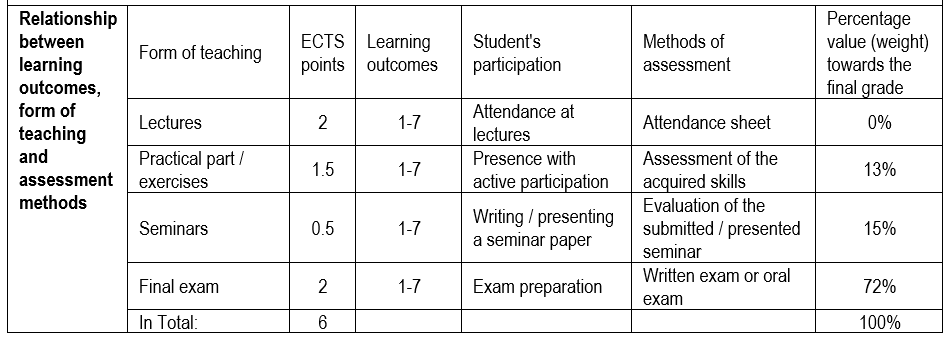Anatomy will be considered from a functional point of view, with special emphasis on adult clinical anatomy. Anatomy of children and adolescents will be considered in clinically relevant areas. Students will get to know the structures on the head and neck that are important for clinical research. They will also gain knowledge about the structure of the cavities in their heads, especially those that are connected to the topics on the digestive and respiratory system elaborated during the first year. In the area of the CNS, students will acquire knowledge about the basics of the central nervous system, brain envelopes, vessels and senses. Students will be able to explain the peripheral nervous system.
Thorax: bones, functional anatomy of joints and muscles, diaphragm, milk glands, oesophagus, trachea, bronchial tree and lungs, heart, cavities, valves, blood vessels of the heart, innervation of the heart, pericardium, large and small bloodstream, mediastinum, lymph nodes, auscultatory site of the heart and lungs, topographic regions.
Abdomen: abdominal wall and inguinal canals, stomach, duodenum, small and large intestine, rectum, liver and pancreas, spleen, development of organs in the abdominal cavity, peritoneum, blood vessels of the digestive system, portal vein, kidneys and adrenal glands, urinary tract, urinary bladder, pelvis major and pelvis minor, urethra, male and female reproductive organs, testicular descent, retroperitoneal and subperitoneal cavity, lymph glands and lymph nodes, functional spinal anatomy, topographic regions.
Upper extremities: bones, functional joint anatomy, functional muscle anatomy, spinal cord, brachial plexus and peripheral nerves, superficial and deep blood vessels, topographic regions.
Lower extremities: bones, functional joint anatomy, functional muscle anatomy, lumbosacral and pudendal plexus, superficial and deep blood vessels, topographic regions.
Elective courses: selected chapters of radiological anatomy, selected chapters of neuroanatomy, chest and abdominal cross-sections.
Required course materials:
Dual Reihe. Anatomija. 2018. Medicinska naklada
- Jalšovec D. Sustavna i topografska anatomija čovjeka. 2005. Školska knjiga
- Marušić A, Krmpotić-Nemanić J. Anatomija čovjeka. 2007. Medicinska naklada
- Bajek S, Bobinac D. - Sustavna anatomija čovjeka. 2007. Digital point
- Sobotta - Atlas anatomije čovjeka I. + II. + III. svezak + Tablice. 2013. Naklada Slap
Supplemental course materials:
- Werner Platzer. Priručni anatomski atlas 1 - sustav organa za pokretanje (2011.), Priručni anatomski atlas 2 - unutarnji organi (2012.), Priručni anatomski atlas 3 - živčani sustav i osjetila (2011.). Medicinska naklada
- Frank H. Netter. Atlas anatomije čovjeka. 2003. Golden marketing
Upon completion of this course, students will be able to:
1. Identify the anatomical structures that build organic systems in the area of the thorax and abdomen
2. To determine the irrigation and innervation of organs in the area of the thorax and abdomen as well as the structure and function of the locomotor apparatus of the upper and lower extremities and their irrigation and innervation
3. Define the basic principles of the structure of the nervous system
4. Judge the content and topographic intermediates of individual regions of the trunk and extremities
5. Critically evaluate basic knowledge of anatomy with clinically significant entities
6. Evaluate the boundaries of individual regions of the trunk and extremities, and their overall anatomical content on the corpse
7. Critically assess the relationship of basic medical knowledge to clinical disciplines



